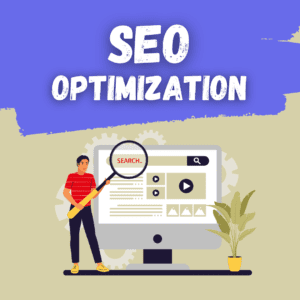Digital Marketing Terminology
Note: These terms are from the Google Digital Marketing & E-commerce course module 4: Think outside the inbox: Email marketing
A
A/B testing: A method of testing where two versions of content with a single differing variable
are compared to determine which yields better results
Accessibility: Considering the needs of people with disabilities when products, services, and
facilities are built or modified, making them usable by people of all abilities
Acquisition email: An email sent to acquire new customers
Alt text: A brief, written description of an image with the primary purpose of assisting
individuals who are visually impaired
B
Behavioral data: Refers to information about the actions a customer takes—or doesn’t
take—when it comes to shopping on a website
Broken link: A hyperlink that no longer leads to the correct website
C
Call to action: An instruction that tells the customer what to do next
Click-to-open rate: The percentage of email recipients who clicked on one or more links in an
email
Complaint rate: The percentage of complaints recipients send to mailbox providers about
receiving an email
Conversion rate: The percentage of users who clicked on a link and took a desired action, like
making a purchase
Customer referral: A word-of-mouth initiative that encourages existing customers to
introduce their family, friends, and contacts to become new customers
D
Data: A collection of facts or information
Demographic data: Refers to information specific to the customer, such as age, gender
identity, income, family size, occupation, education, and location
E
Email body: The text in the main content of an email
Email bounce rate: The percentage of emails sent that could not be delivered to the
recipient’s inbox
Email copy: The text in a subject line, preview text, and email
Email marketing: The process of sending messages to a list of existing subscribers to share
information, drive sales, or create community
Email marketing provider: A company that offers email marketing or bulk email services
Email marketing report: A collection of KPIs presented to the team and stakeholders to
inform them of a campaign’s progress
Email marketing strategy: A set of procedures that a marketer identifies and follows to
achieve their desired marketing goals with email advertising
F
Forward rate: The percentage of recipients who click on the “share” button to post to social
media or who click the “forward” button to send to others
G
Google Display Network: A group of websites, videos, and apps where ads can appear
I
Insight: Information that is discovered through research or data analysis and that can be
actioned upon to benefit a marketing strategy
K
Key performance indicators (KPIs): Measurements used to gauge how successful a business
is in its effort to reach a business or marketing goal
L
Lead generation: The practice of collecting a potential customer’s email address
List growth rate: The rate at which an email subscriber list grows
M
Marketing automation: The practice of using software, programs, and technology to create
and implement applications to automate marketing tasks
Merge tag: (refer to personalization tag)
Metrics: Quantifiable measurements that are used to track and assess a business objective
N
Newsletter: An email sent to subscribers on a regular basis, containing news and informational
content relevant to the company and of interest to subscribers
O
Open rate: The percentage of users or customers who open an email
P
PESTLE analysis: An audit that identifies political, economic, social, technological, legal, and
environmental factors that may affect a marketing strategy
Personalization tag: A code that allows the writer to insert unique user data from their mailing
list into emails
Preview text: Text next to an email’s subject line in the inbox that gives extra insight into what’s
inside the email
Promotional email: An email sent out to inform subscribers of new or existing products or
services
Psychographic data: Refers to information based on customers’ activities, interests, and
opinions
Q
Quality control: The process through which a business seeks to ensure that product quality is
maintained or improved
R
Retention email: An email sent to a current customer with the intent of keeping them as a
customer
Return on investment (ROI): Ratio of money made and money spent
S
Screen enlargement application: Technology that helps users see content more easily by
magnifying text and images on a computer or digital device screen
Screen reader: An application that converts text, buttons, images, and other screen elements
into speech or Braille
Search engine marketing (SEM): Increasing a website’s visibility on a search engine results
page through paid advertising
Segmentation: The practice of dividing an email subscriber list into smaller groups based on
criteria like interests, location, or purchase history
SMART: A goal-setting method that can help define and measure the success of the goals of a
campaign; Stands for “specific,” “measurable,” “attainable,” “relevant,” and “time-bound”
Social ads: Paid advertisements on social media platforms targeted to social media users
Spam: Unsolicited and unwanted junk email sent out in bulk to a broad recipient list
Stakeholders: The people—usually within an organization—that are affected by the campaign
in some way
Subject line: The first text recipients see after the sender’s name when an email reaches their
inbox
SWOT analysis: An audit that identifies a company’s strengths, weaknesses, opportunities,
and threats
U
Unsubscribe rate: The percentage of email recipients who unsubscribe from a send list after
opening an email
W
Website prompt: A digital banner that calls on a website visitor to act in some way
Welcome email: An email sent out to brand new customers or subscribers
To view more blog posts about digital marketing, SEO, Divi, or other related topics, visit our website’s blog section.

